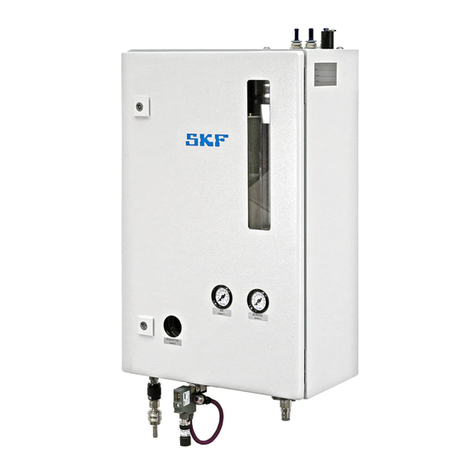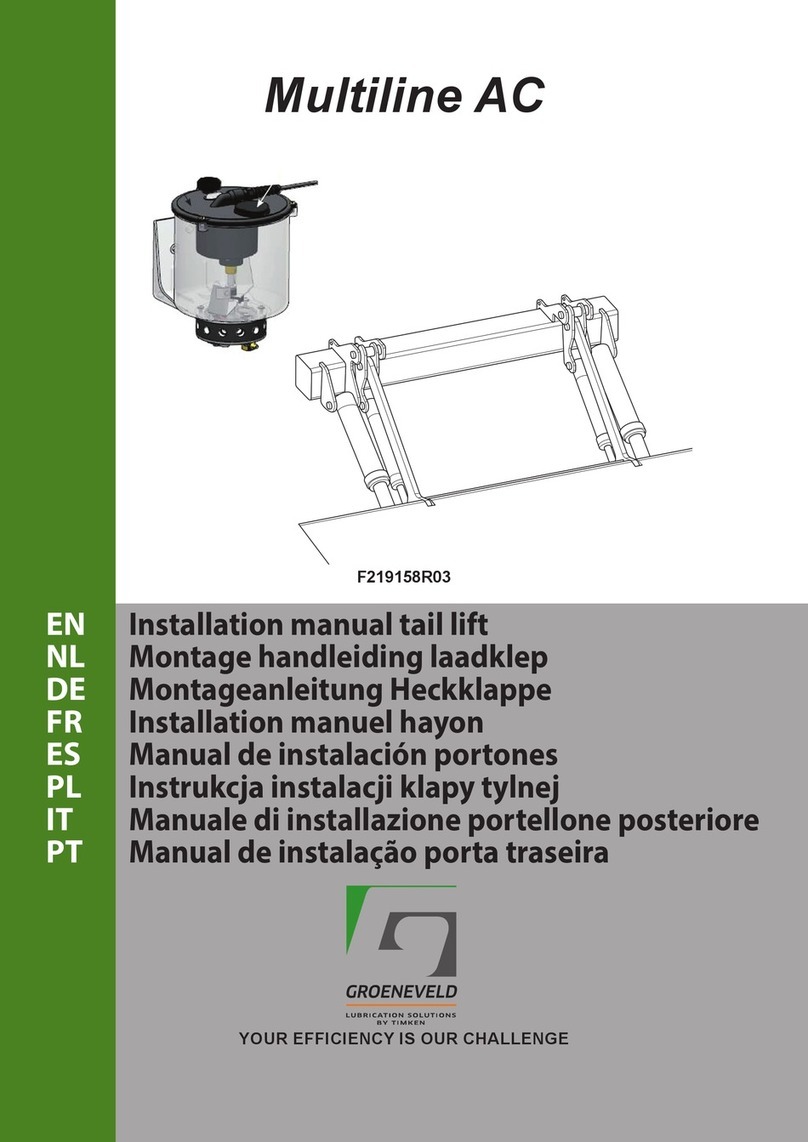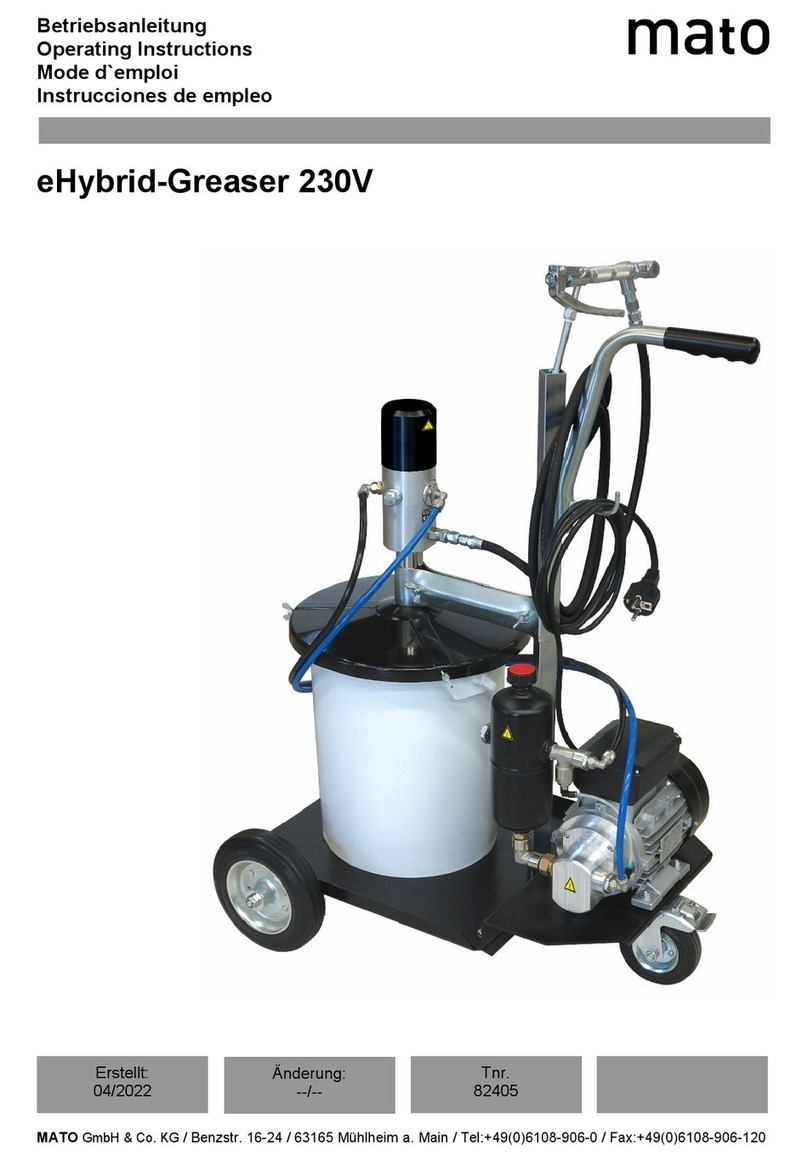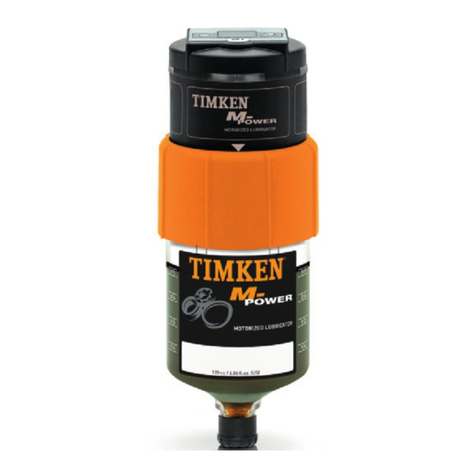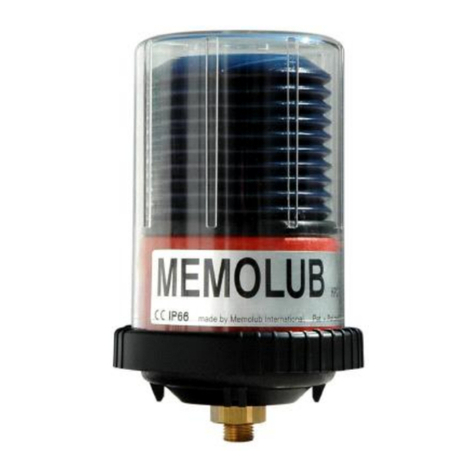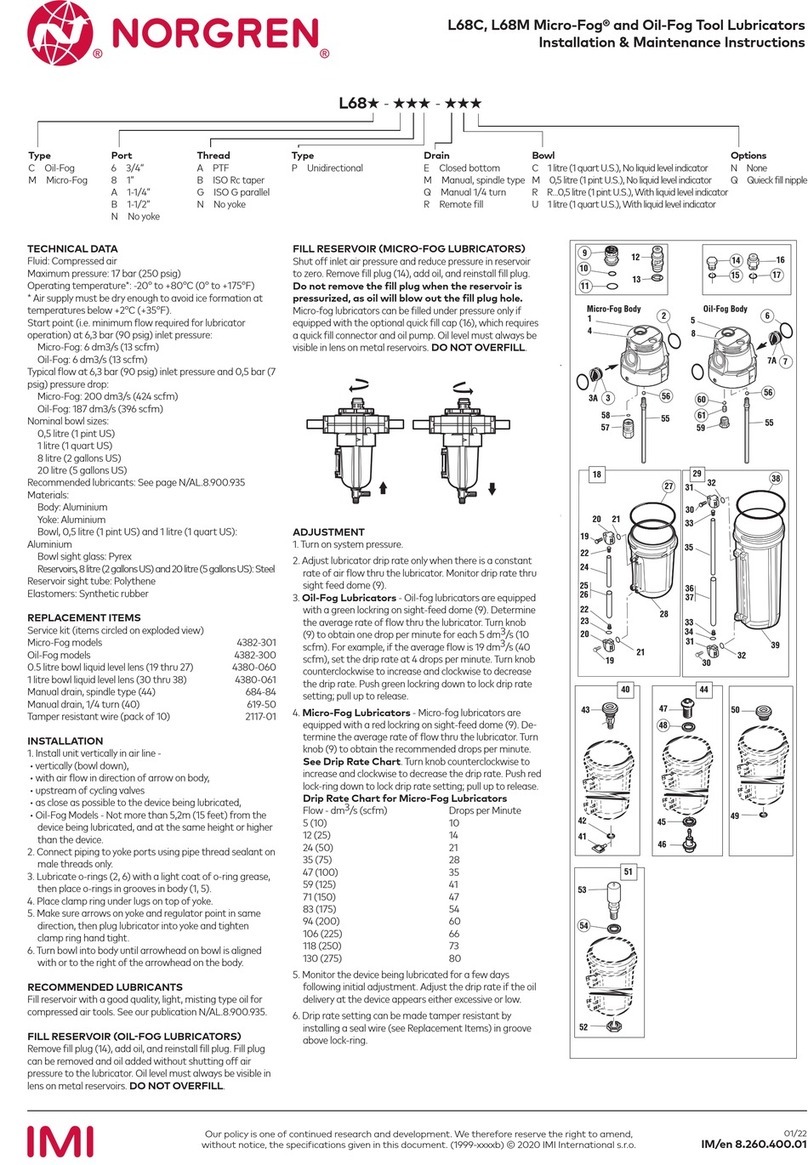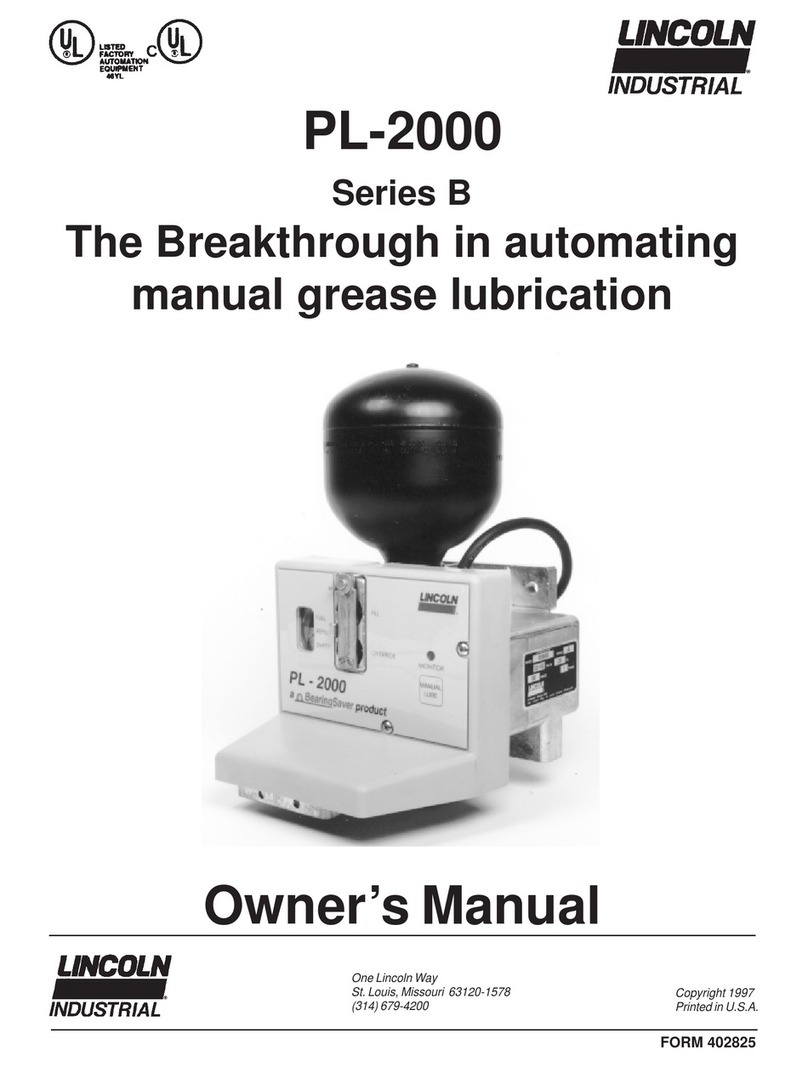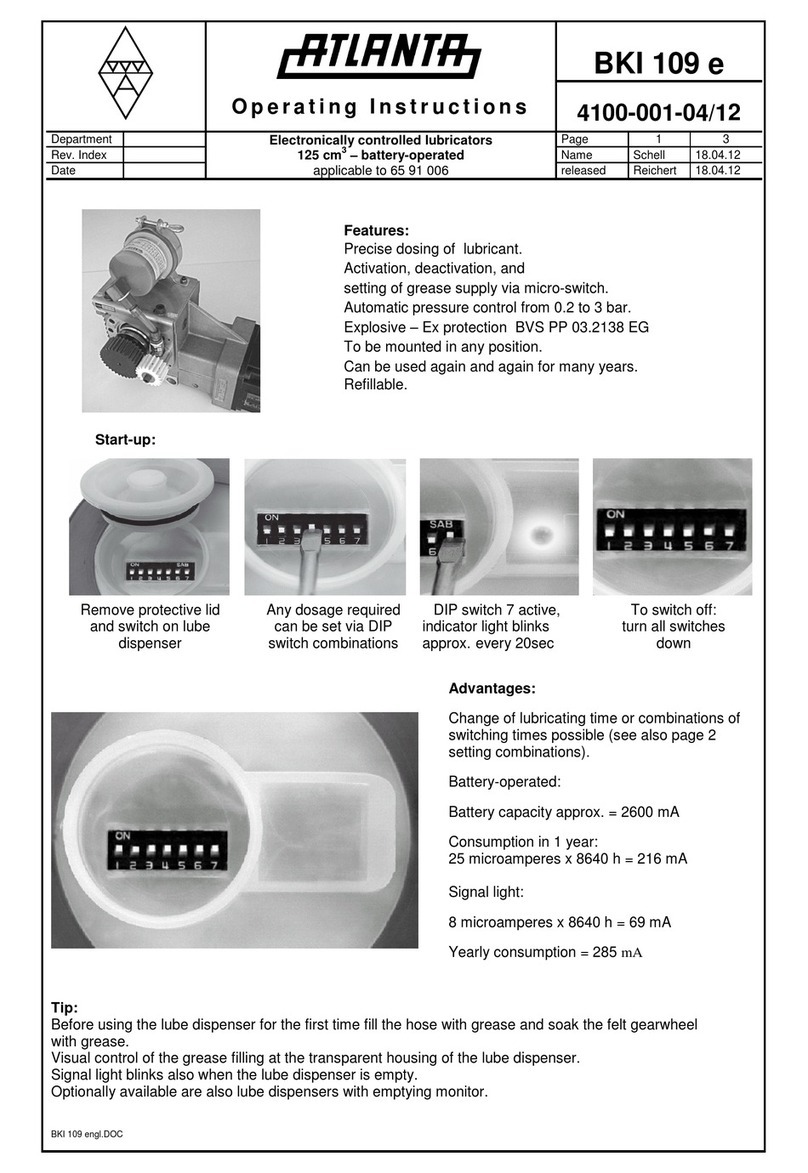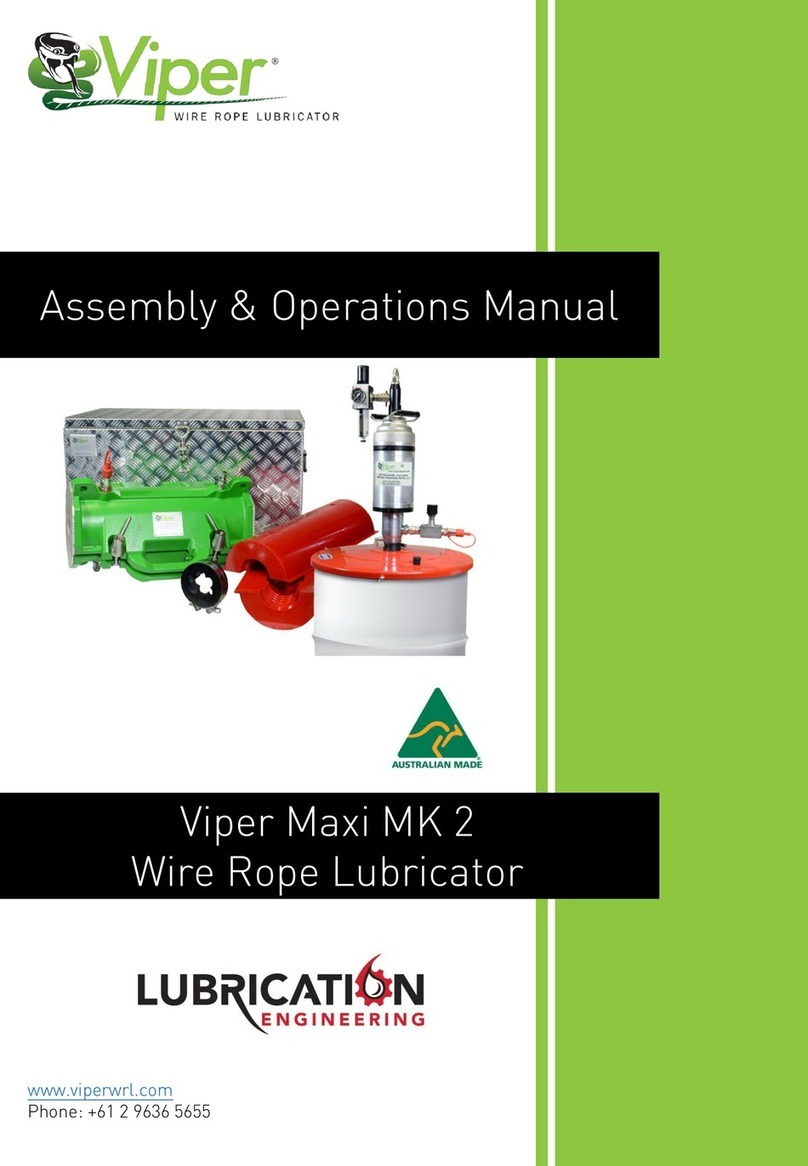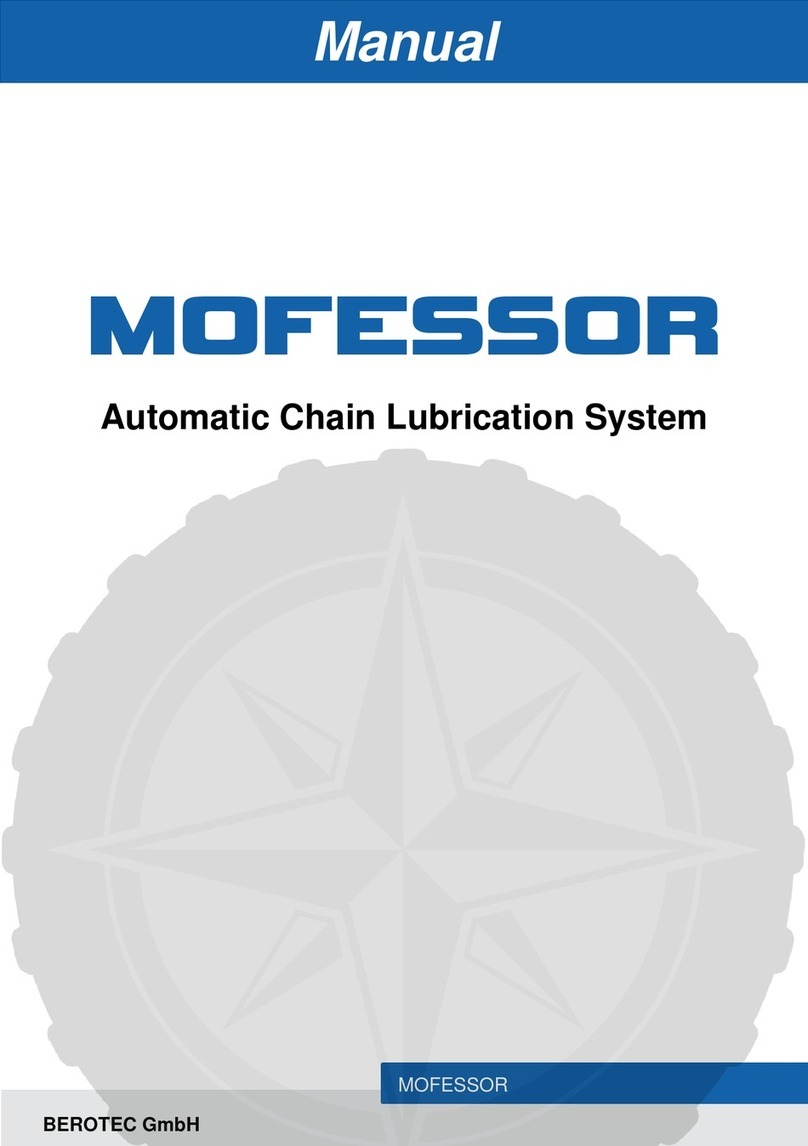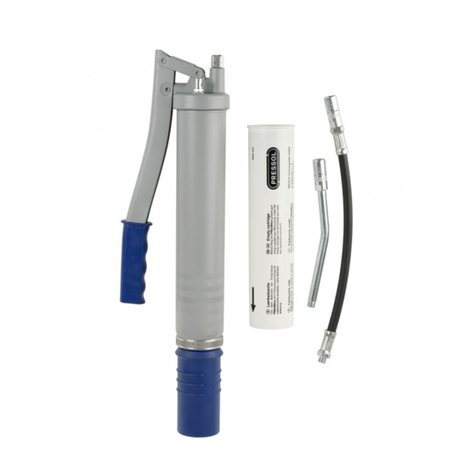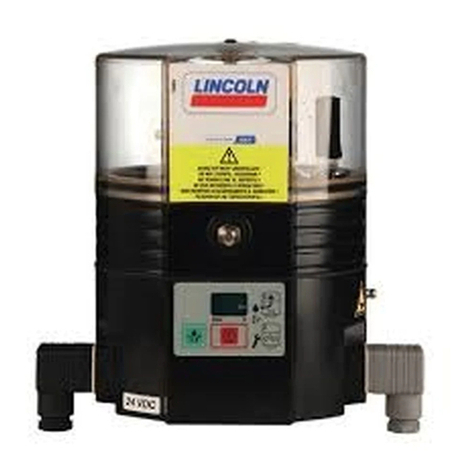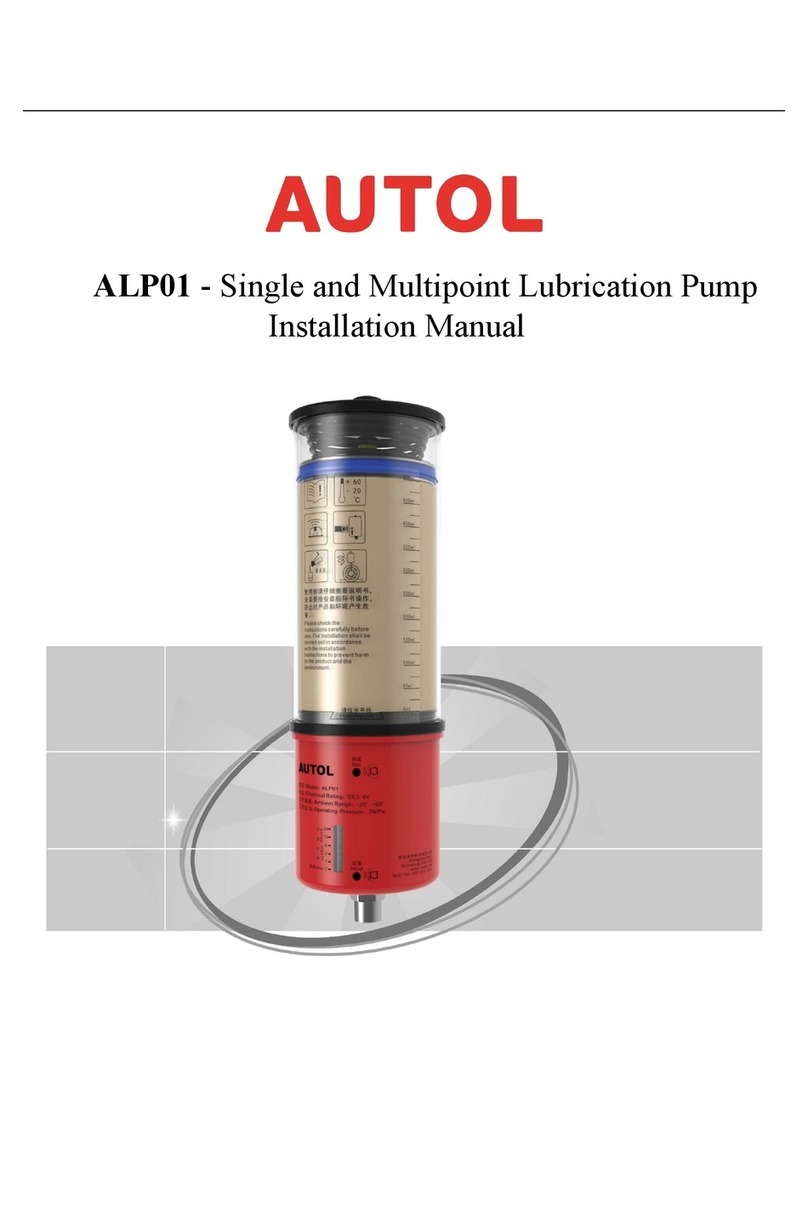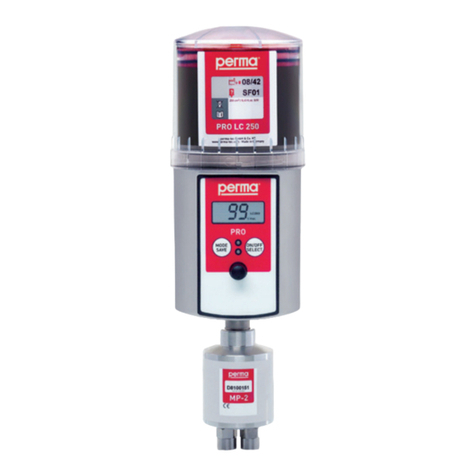
Page Number - 3
Airless Spray System®
Form 402976
will be disabled and the stored Accumulator pressure will
force the Measuring Piston to move, forcing the lubricant out
of the Measuring Valve outlet, through a hose or tube into the
Spray Head, through the Solenoid Valve and out the nozzle
onto the work surface. When the Timer times out, the Spray
Solenoid will close and the Pressure Switch, sensing low
pressure, will turn on the Pump to refill the measuring
chamber for another cycle.
Heating the Airless Spray System
To maintain an optimal and predictable spray pattern, the
measuring valve, spray head and interconnecting supply
line should be kept warm. The temperature of the lubricant
should be kept as constant as possible for a consistent
spray pattern. The amount of heat used is dependant upon
the characteristics of the lubricant and the ambient
temperatures to be encountered.
Heating ports are provided in the spray head and measuring
valve to facilitate the application of heat to the system.
These ports may be used to circulate a warming fluid in a
series loop through the spray head and measuring valve. A
heat trace line may also be part of this loop to keep the
interconnecting supply line warm as well.
The heating loop may consist of the return or supply line of a
hydraulic circuit which has enough fluid circulating through it
to keep the components warm. The engine cooling system
may also be used. Temperatures should be as consistent
as possible once the machine has warmed up and is in
operation.
Spray tips should be selected on the basis of the lubricant
temperature once the machine is warmed up and in
operation. Generally, as the lubricant gets hotter, the spray
pattern will get wider and become more atomized, for a
given spray tip. If the lubricant is too cold, the lubricant spray
pattern will be very narrow, become a solid stream, or will
not spray at all.
Lubricants
This system was designed and tested with grease
lubricants. Lubricants with high viscosities, large particles
and with very tacky properties should be avoided. Any
lubricant should be tested in the system before the lubricant
is committed to long term use.
Lubricants with large particulates may cause blockages in
the spray tips and valves used in the spray system. Any
particulates will act as an abrasive and cause premature
wear on these components.
A lubricant change may require a change in spray tips. A
change in lubricant properties will change the spray
characteristics.
The controller may also be used to synchronize timing of
the spray with the movement of a machine part.
The measuring valve and spray head assemblies are
supplied with ports for conducting heated fluid. These
heat ports may be connected into an existing source of
heat, such as hydraulic return lines or engine coolant
lines to provide heat for predictable spray patterns. A
relatively constant temperature fluid (while in operation)
between 80° F min. and 160° F. max. should be used.
Spray tips should be selected based on the lubricant to
be sprayed and the temperature of the lubricant as it
passes through the spray system.
Product Specifications
Output per Cycle - .500 in³ max. (8.2 cc)
(dependant on spray ON time)
Pressure Switch Preset
Pressure - 4500 psi (310 bar) max.
Output Pressure - 4500 psi (310 bar) max.
Operating Temperature* - -20° to 160° F (-28° C to 71° C)
Operating Voltage - 12 VDC
Initial Current - 1.2 amps
Material Inlet
(measuring valve) - 3/8 SAE J-1926 (9/16 - 18 UNF)
Material Outlet
(spray head) - 1/2 SAE J-1926 (3/4 - 16 UNF)
Interconnecting Ports - 3/8 SAE J-1926 (9/16 - 18 UNF)
Pressure Switch Contacts - 5 Amps @ 125/250 VAC
Initial Hydraulic Charge
(measuring valve) - 2000 PSIG (138 bar)
Initial Pneumatic Charge
(measuring valve) - 1500 PSIG (103.5 bar)
* To achieve consistent spray material temperature, pump to
be maintained at +80° F to 120° F.
Spray tip must be ordered separately and selected based on
lubricant and pattern desired.
OPERATION
When the Pressure Switch, mounted on the Measuring Valve
senses low pressure on the Measuring Valve Chamber, it
signals the control unit to turn on the pump and begin filling
the Measuring Chamber with lubricant. Due to the hydraulic
and gas pre-charge on the Measuring Valve and
Accumulator respectively, initial charging of the lubricant will
begin at 2000 psi. The Pump will continue to charge the
Measuring Chamber, moving the Measuring Piston in its
bore against the precharged hydraulic circuit and
accumulator pressure. The Check Valve will prevent any
lubricant from escaping the Measuring Chamber, and the
Solenoid Valve will prevent lubricant from flowing out of the
Spray Nozzle. When the pressure inside the Measuring
Chamber reaches the pressure switch set point, the Pump
is turned off, the Spray Valve is enabled and a ready light is
turned on, indicating the system is ready to spray. A push
button or other device is used to initiate the spray cycle at
the Control Unit. When the spray cycle is initiated, a timer
will begin to time, the Solenoid Valve will open, the Pump
